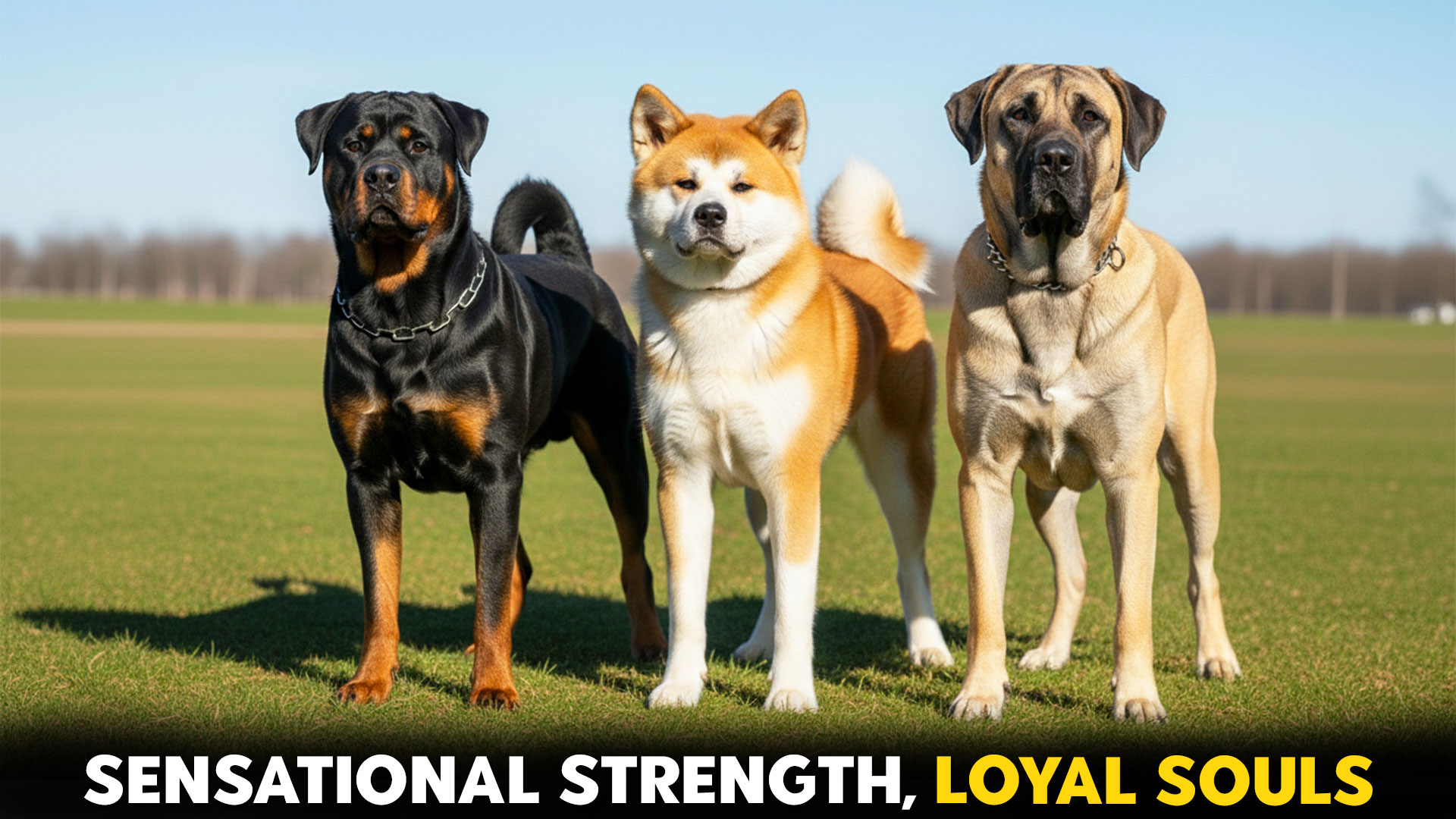The image of a truly powerful dog is undeniable. These canine athletes possess an incredible physique, often displaying visible muscle definition and raw, coiled power. These striking dogs command attention with their sensational appearance and are built purely for performance and strength.
This remarkable musculature is not just genetic; it’s a testament to the working history of these breeds. Many were developed for intense roles, including guarding, herding livestock, or pulling carts. Their defined bodies reflect a necessary combination of strength, endurance, and unwavering dedication to their tasks.
If you admire the sheer strength and presence of a powerfully built companion, you’ve come to the right place. We’ll explore the world of breeds known for their exceptional build, why they remain loyal, athletic, and sensational members of the canine family.
Sensational Muscular Dog Breeds
Meet the muscular dog built like a pure athlete—defining strength, loyalty, and sensational definition.
1. Rottweiler
The Roman Roots of the Rottweiler
Rottweilers trace their lineage to powerful Roman mastiff dogs used to drive cattle and guard soldiers. PetMD mentions that these early canines settled in Rottweil, Germany, evolving into “Butcher’s Dogs” known for herding, pulling carts, and protecting valuables.
Complex Canine Personality
Rottweilers are known for their quiet confidence, loyalty, and deep attachment to their humans. While some are affectionate goofballs, others are reserved and serious, often wary of strangers. Their protective instincts make them sensational companions—but also demand responsible ownership.
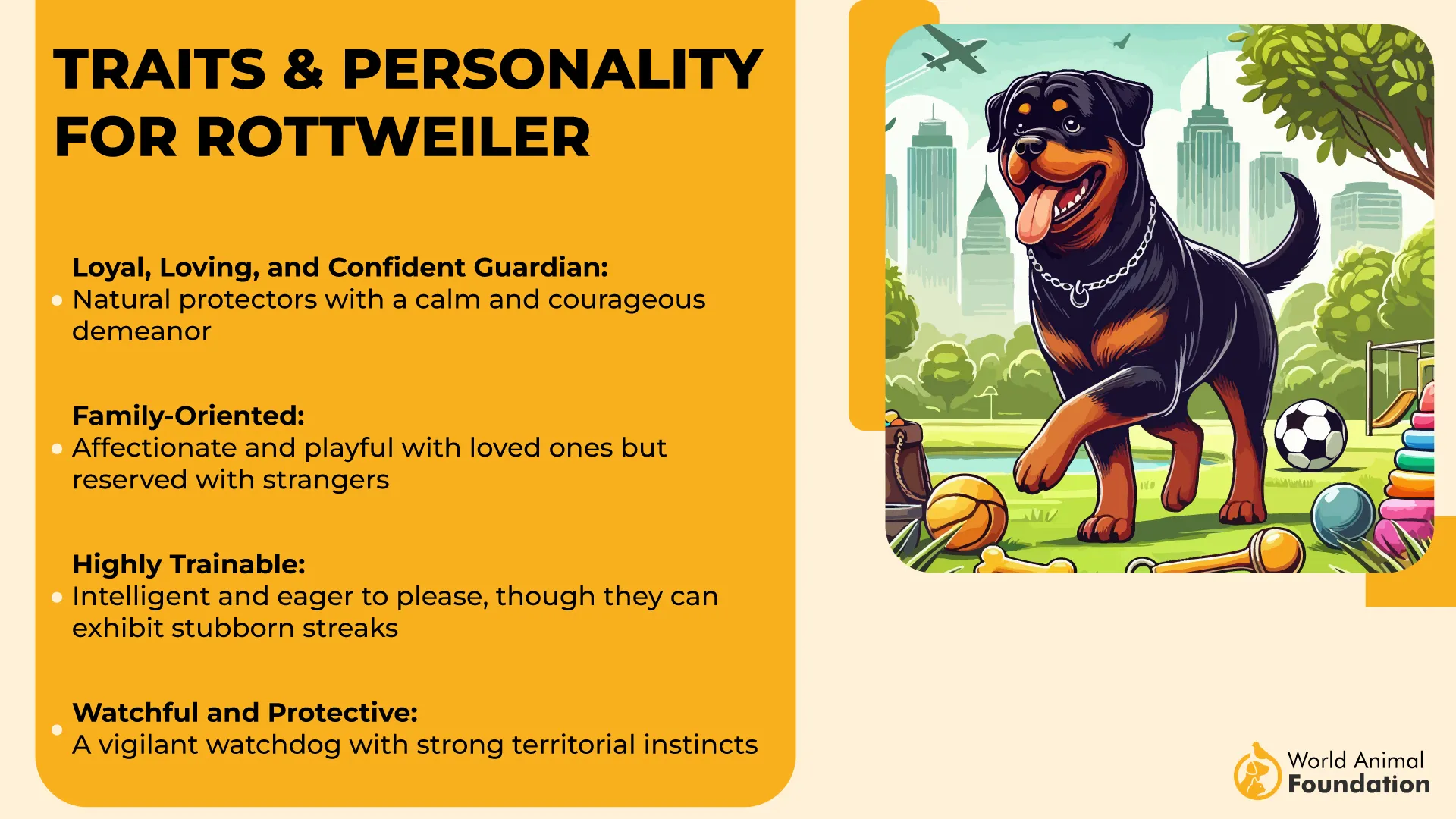
Discipline for a Determined Mind
Though highly intelligent and eager to learn, Rottweilers can be headstrong and selective about commands. Early socialization and consistent, positive reinforcement are crucial to prevent aggression or destructive habits. Without mental and physical challenges, they may become bored and disruptive.
The Rottweiler’s Imposing Physique
Stocky, athletic, and robust, the Rottweiler is built like a tank with a deep chest, thick muscles, and a commanding posture. Bred for cart-pulling and herding, their strength is functional—not just for show. Regular exercise keeps their powerful frame in peak condition.
2. Akita
The Akita’s Storied Heritage
Originating in Japan’s snowy Akita prefecture, this noble breed was developed in the 17th century as a powerful hunting and guard dog. Once favored by samurai and royalty, Akitas became revered symbols of health, longevity, and loyalty.
The Silent Sentinel: Personality of an Akita
Akitas are calm, composed, and intensely loyal—often reserved around strangers but deeply affectionate with their families. They’re not social butterflies; instead, they thrive on quiet companionship and are naturally protective.
Training the Willful Warrior
Intelligent yet stubborn, Akitas are independent thinkers who require firm, consistent training from an early age. Their guarding instincts and low tolerance for other dogs make early socialization non-negotiable. They need a confident owner who can lead without force but with steady authority.
Snow-Built Strength
Heavy-boned, broad-headed, and powerfully built, Akitas embody solid, functional strength. Their thick double coat and curled tail signal spitz heritage, while their dense muscle supports stamina and controlled force.
Though not hyperactive, their powerful body requires regular low-impact exercise and mental engagement.
3. Anatolian Shepherd
Legacy Carved in Time
The Anatolian Shepherd hails from Turkey’s Anatolian Plateau, where it has guarded flocks for thousands of years against wolves, bears, and thieves. Depicted in ancient carvings and texts, it’s among the oldest livestock guardian breeds, as per the AKC.
Independent but Devoted
These dogs are calm, serious, and highly protective, showing loyalty to family but strong suspicion toward strangers. They aren’t overly affectionate and value independence over clinginess, a trait bred for centuries of solo flock duty.
Training a Thinker
Anatolian Shepherds are not eager to please—they’re bred to think for themselves. Early and thorough socialization is essential, and training must be positive and consistent. Without structure and leadership, they may become territorial and difficult to manage around unfamiliar people or animals.
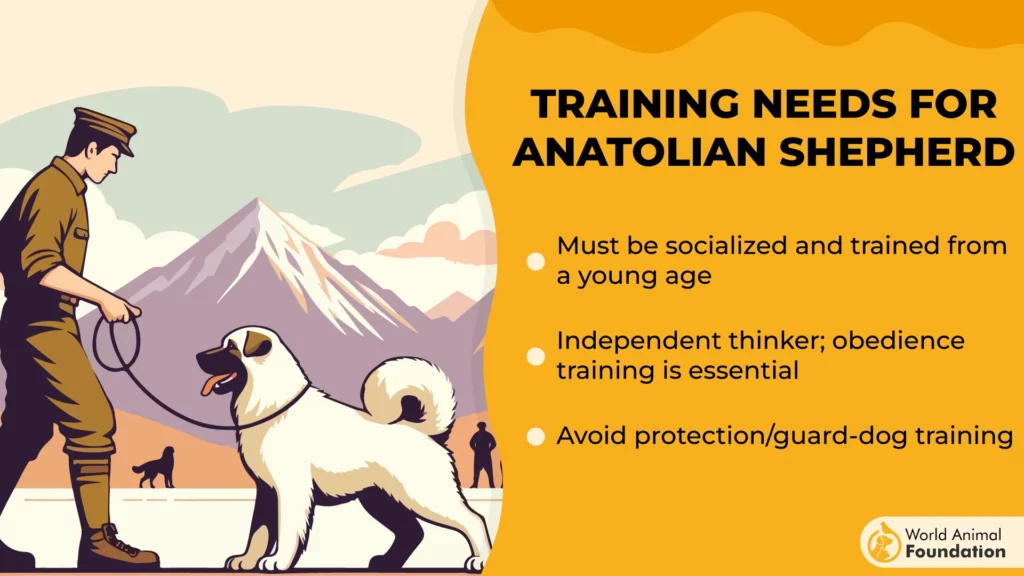
Strength with Stamina
Tall, broad, and powerfully muscled, the Anatolian Shepherd has the physique of a true guardian: fast, durable, and weather-resistant. Their short, dense coat is tailored for harsh climates and long patrols. Despite their size, they’re impressively agile and require regular controlled exercise to stay fit.
4. Cane Corso

From War Dogs to Guardians
The Cane Corso descends from Roman Molossian war dogs, later adapted in Italy for farm work, livestock control, and property guarding.
After nearly disappearing post–World Wars, the breed was revived in the 1970s. Its name—meaning “guardian dog” in Latin—perfectly reflects its ancient, fearless legacy, as stated by PDSA.
Serious, Loyal, and Protective
Cane Corsos are loyal to their families but naturally wary of strangers and unfamiliar animals. Their calm, watchful presence makes them exceptional protectors, though they tend to be serious and not overtly playful. Early socialization is crucial to help them grow into balanced, confident companions.
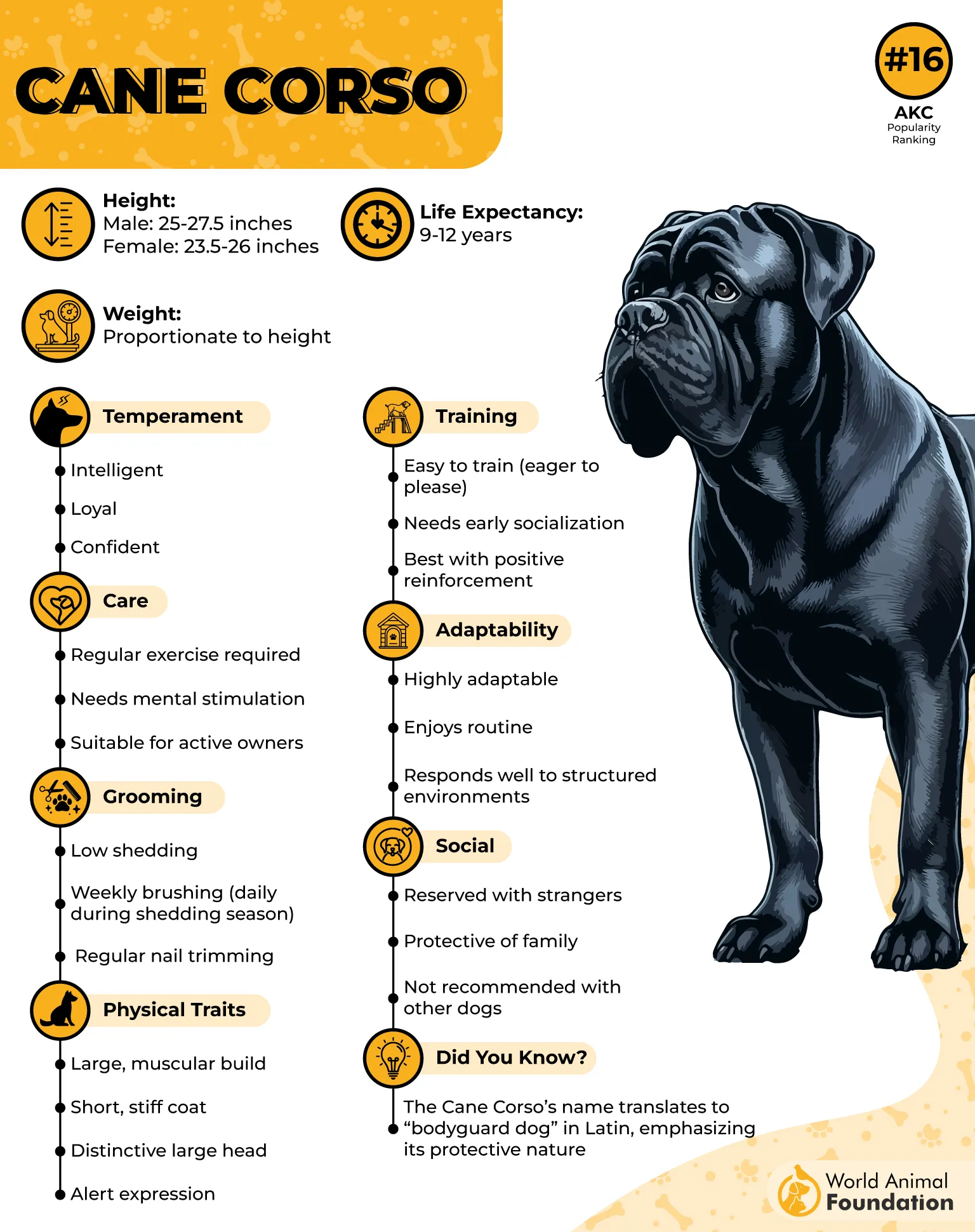
Firm but Fair
Training a Corso requires confidence, consistency, and a positive reinforcement approach—never force or harsh correction.
While they enjoy working with their owner, their strength and independence can challenge first-time handlers. Without structured socialization and boundaries, they may become dominant or territorial.
Muscle and Might
Powerfully built with a broad chest, large head, and thick legs, the Cane Corso exudes strength and control. Its short, dense coat and athletic physique reflect its working heritage as a hunter and guardian. Daily exercise and mental stimulation are key to maintaining its muscular form and focus.
5. American Pit Bull Terrier
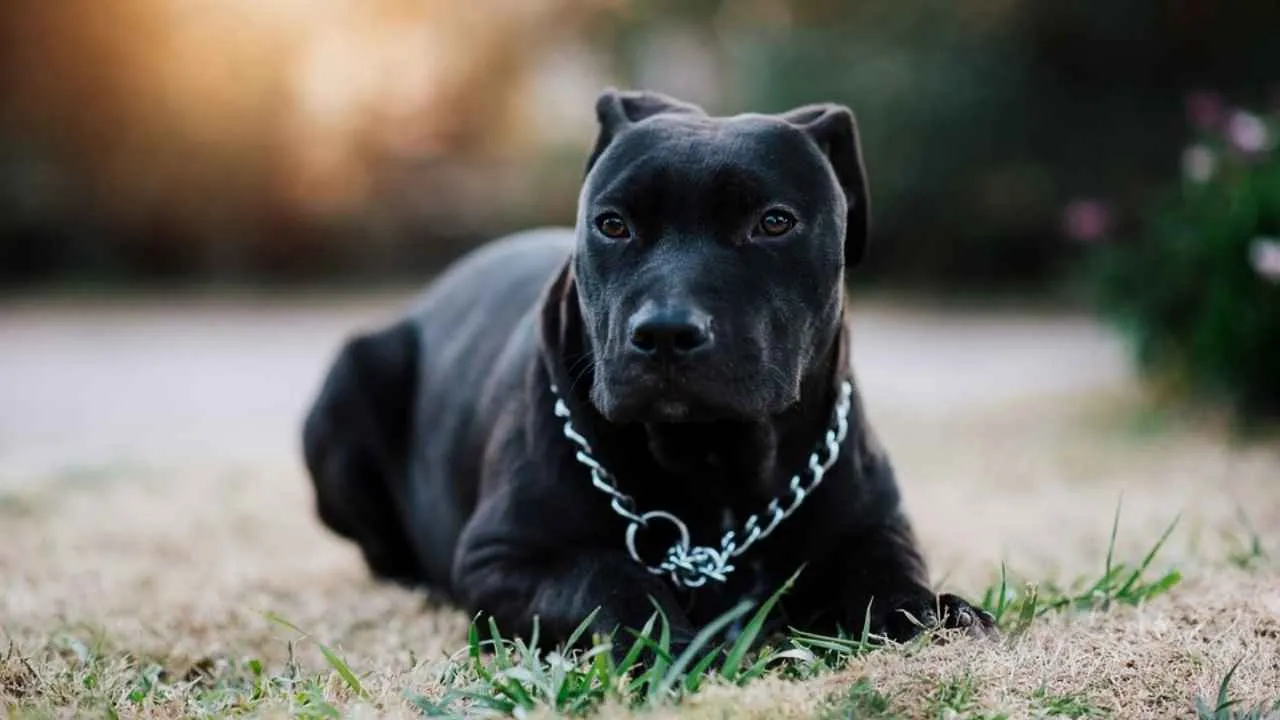
From Bloodsport to Best Friend
Originally bred in England for bull baiting, the American Pit Bull Terrier was later used in dog fighting rings after being brought to the U.S. Today, these medium-sized dogs are beloved pets with a misunderstood legacy, according to Hill’s Pet.
Eager, Energetic, and Endearing
Pit Bulls are affectionate, playful, and thrive on human interaction, often forming deep bonds with their families. While they’re usually gentle with people, many are not dog-social, especially with others of the same breed. Their adventurous spirit makes them both entertaining and demanding companions.
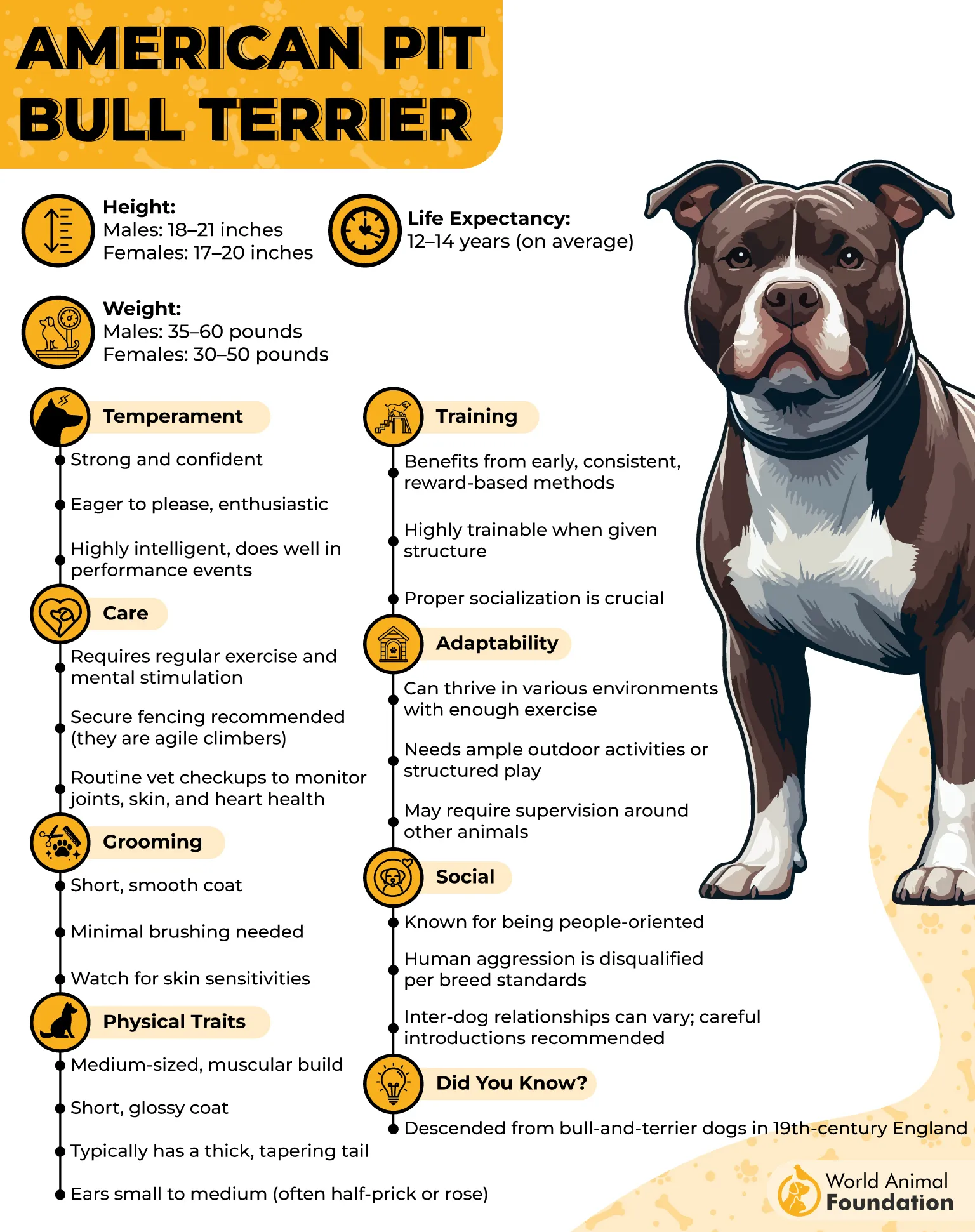
Training the American Pit Bull Terrier
Smart, eager to please, and full of energy, Pit Bulls respond well to structured training rooted in positive reinforcement. They do best with early socialization, consistent rules, and engaging activities to challenge their minds. Without guidance, their tenacity can turn into stubbornness or reactive behaviors.
The Pit Bull’s Athletic Frame
With a low center of gravity, broad chest, and incredibly defined muscle tone—especially in the head and neck—this medium-sized dog is built for strength and agility. Their athleticism shines in sports like agility, weight pulling, and fetch.
6. Dogo Argentino
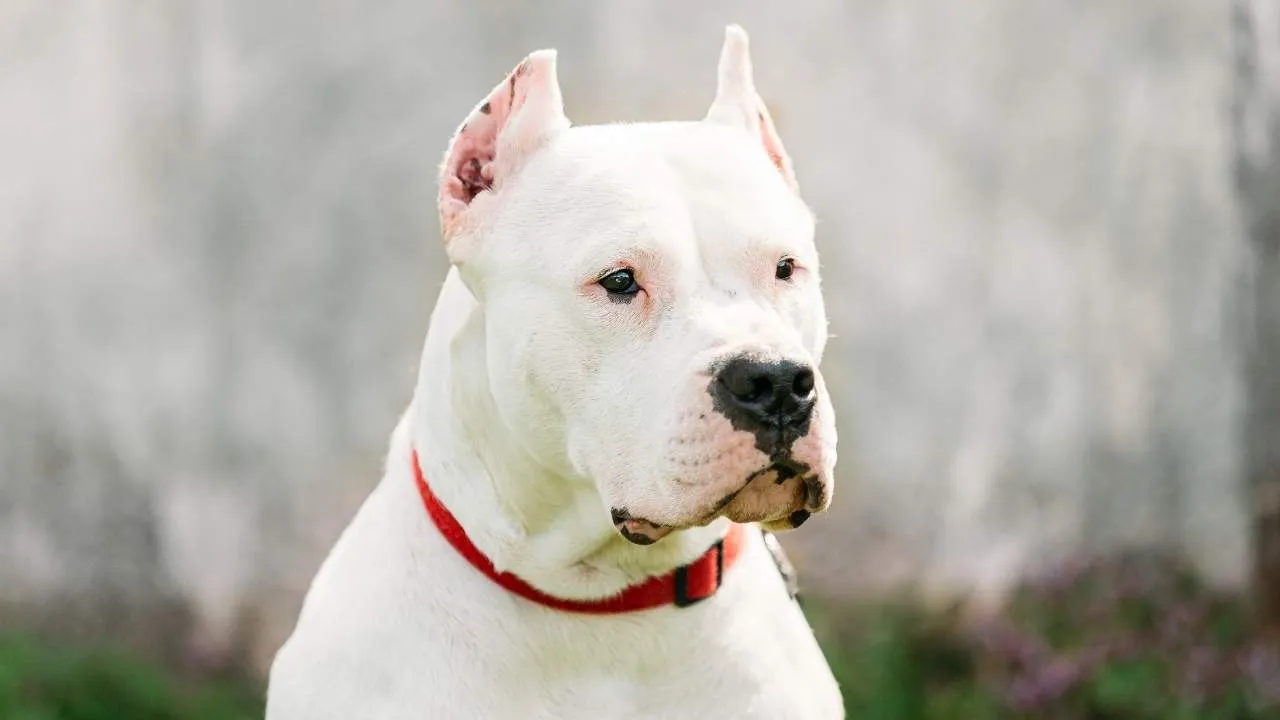
Born to Hunt
Developed in Argentina in the early 20th century, the Dogo Argentino was bred to hunt large, dangerous game, such as wild boar and pumas. Created by Dr. Antonio Nores Martínez, the breed combined strength, scenting ability, and pack cooperation.
Bold Yet Devoted
Despite their powerful build and intense stare, Dogos are loyal, affectionate, and often gentle with family.
They’re natural protectors who can be wary of strangers and occasionally unfriendly with other dogs. This muscular breed thrives in active homes with experienced, attentive owners who earn their trust, as per WebMD.
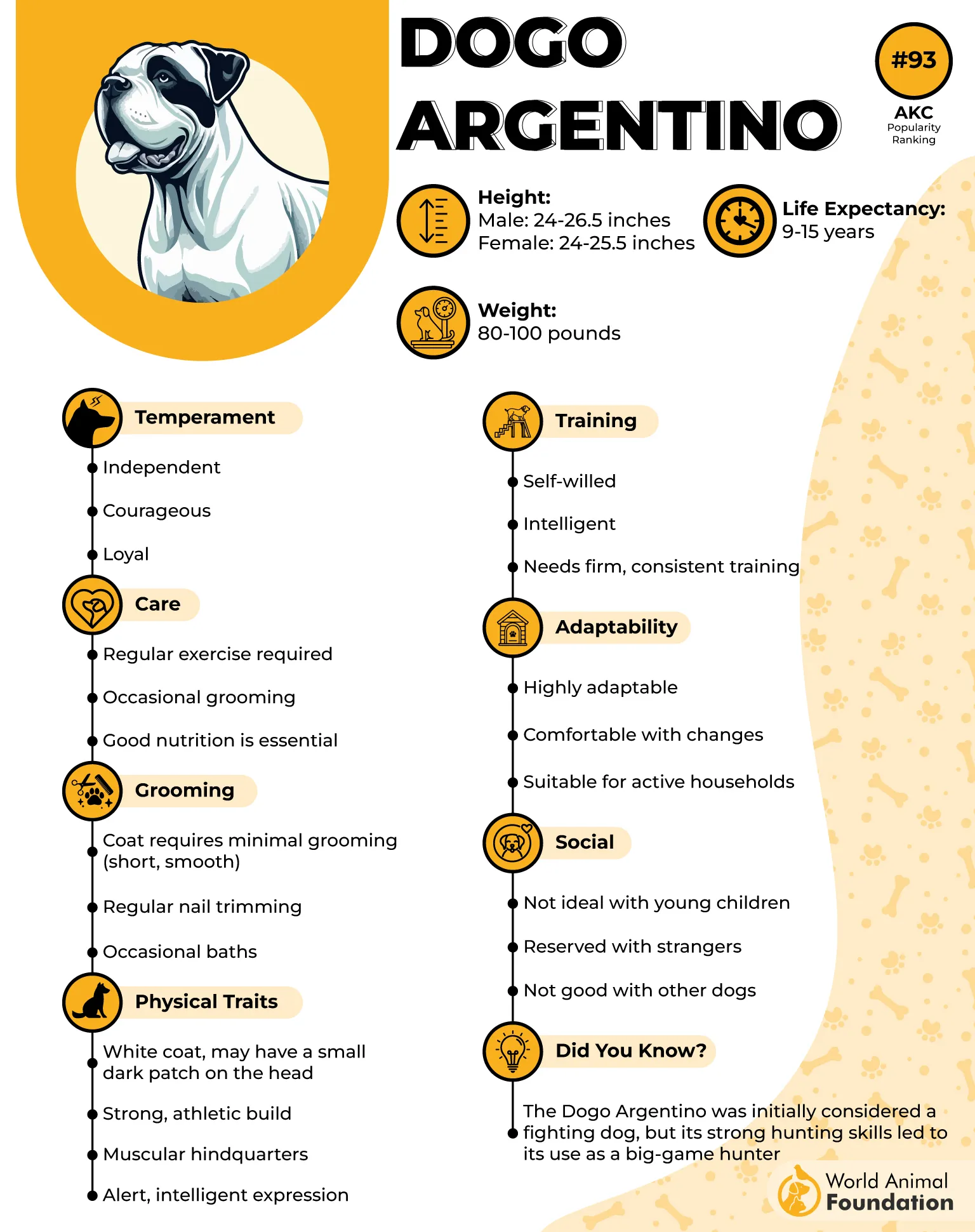
Training with Trust
Dogos need early socialization and firm, positive reinforcement. They can be headstrong and dominant if not given structure, so training should be consistent and engaging. They are not ideal for first-time dog owners due to their strength and confidence.
Muscle in Motion: The Athletic Build
The Dogo is a striking example of power and agility, with a broad chest, thick neck, and defined musculature built for endurance and explosive movement.
Their all-white coat and solid frame give them a clean, athletic silhouette. Daily vigorous activity is essential to keep their body and instincts sharp.
7. Alaskan Malamute
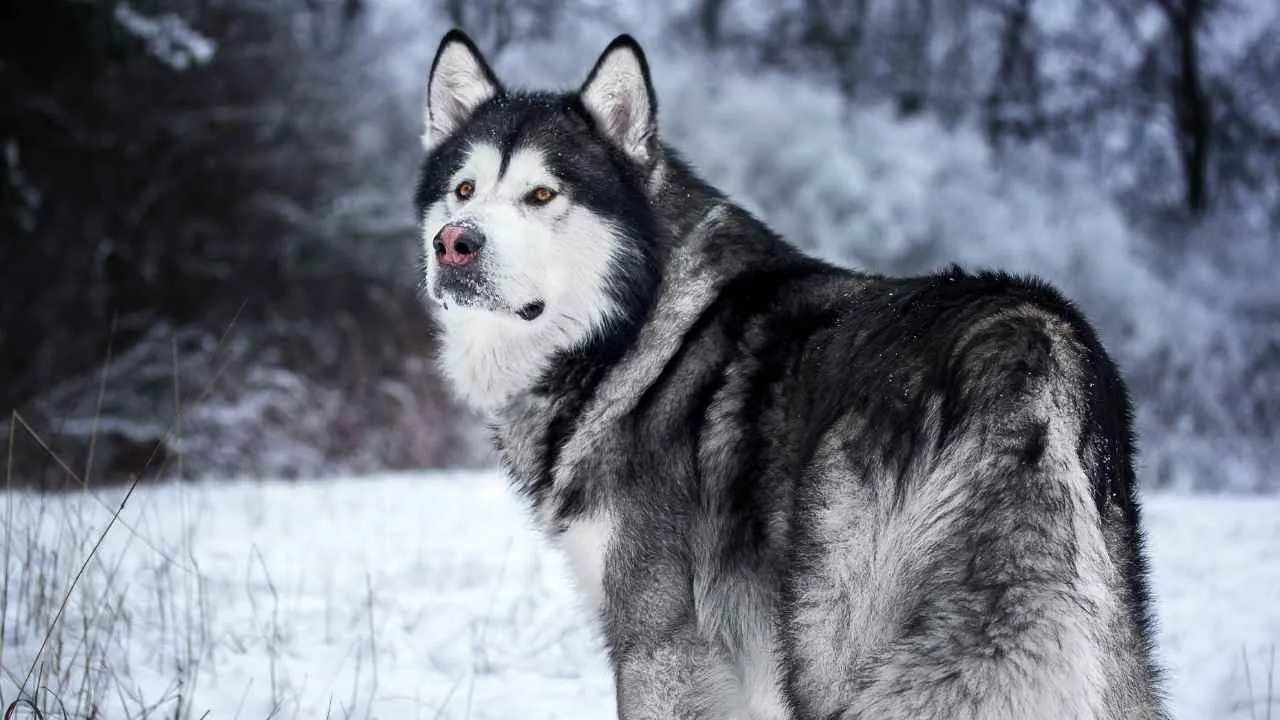
Forged in Ice: The Malamute’s Arctic Heritage
The Alaskan Malamute traces its roots to the Mahlemut tribe of Alaska, where it was originally bred to pull heavy sleds and survive brutal arctic conditions. These dogs were once used to hunt seals and deter polar bears, showcasing strength and endurance.
Loyal Yet Mischievous
Malamutes are affectionate, independent, and famously playful with their families but may be aloof with strangers. They don’t make great guard dogs—too friendly and curious—but they’re deeply pack-oriented.
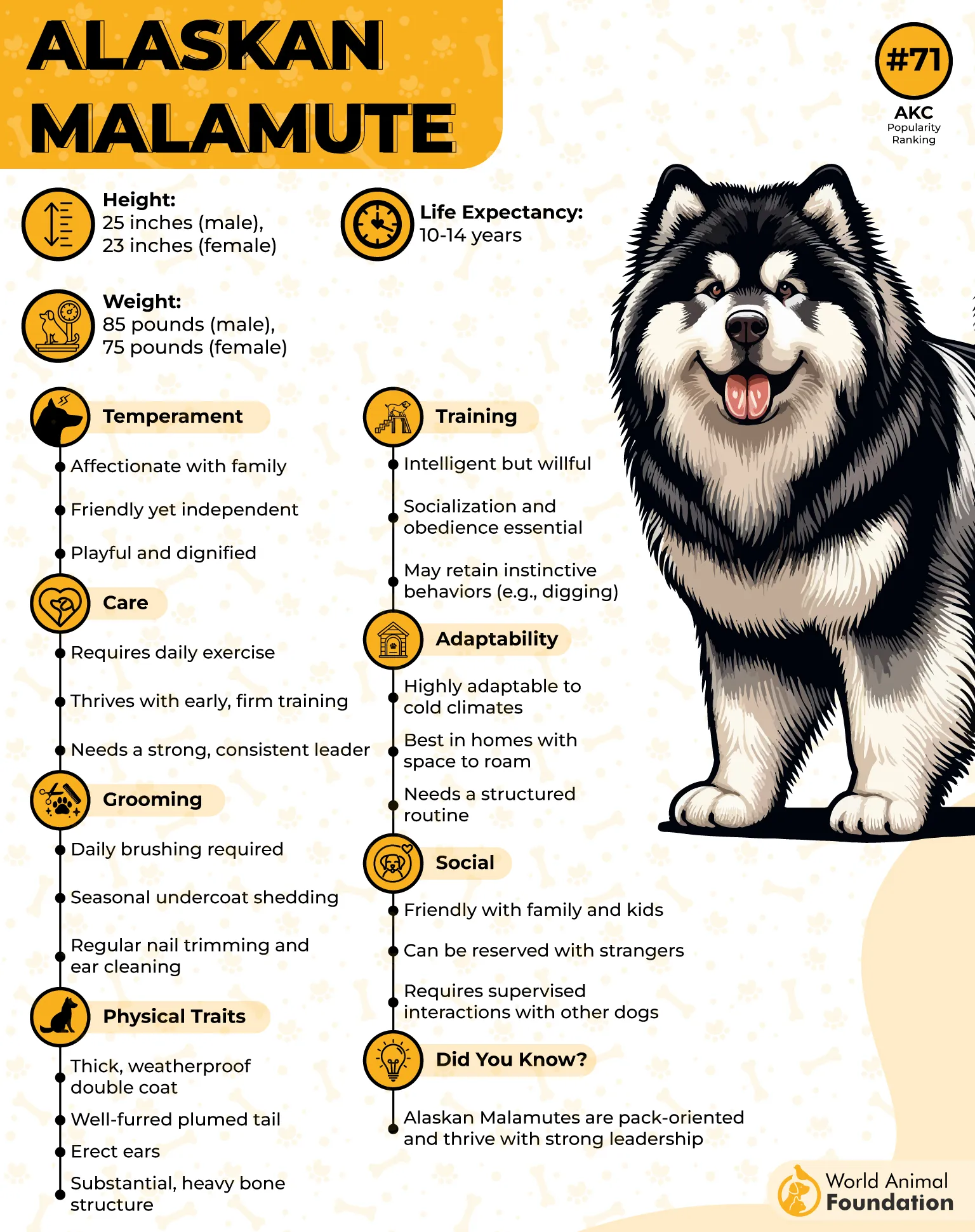
Handling Malamute Willpower
This muscular breed is intelligent but notoriously headstrong, often choosing their own path unless training is fun and consistent. Early socialization is essential, and recall can be unreliable—secure fencing is a must.
The Malamute’s Rugged Frame
Massive bones, a deep chest, and strong hindquarters give the Malamute the stamina to haul heavy freight across frozen terrain. Their thick double coat insulates them from extreme cold while emphasizing their muscular outline.
Conclusion
Muscular breeds are more than just great big beautiful beasties—they’re originally developed for important jobs like guarding livestock, hunting large game, and military work. With their powerful legs, wide chest, and muscular frame, these large-sized dogs combine strength and intelligence, making them highly effective muscular dogs and loyal family dogs.
Despite their impressive appearance, many are incredibly loving pets and gentle giants who thrive with early training and positive upbringing. Their stubborn streak and high energy levels require mental stimulation and consistent guidance to prevent problem behaviors, especially around other dogs and pets.
In the canine world, these muscular breeds are uniquely special, balancing their protective temperament with affection. Whether guarding farms or playing at home, they bring more brawn and brain to the table than most, proving they’re much more than just couch potatoes.


